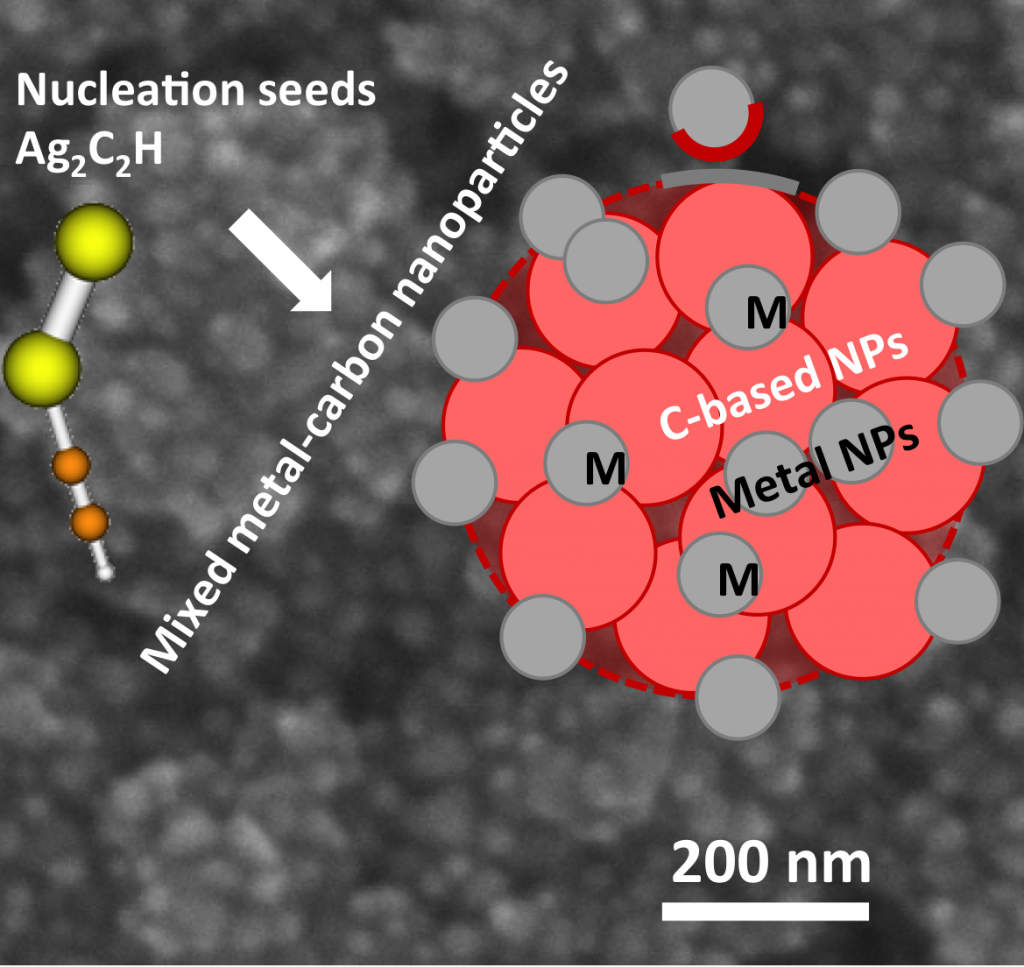Impact of metals in the chemistry of (stellar) dust
Understanding the formation of stardust in the laboratory is one of the objectives of the ERC Synergy Nanocosmos project (1). The Toulouse team involved in this project has published a methodology to explore the mechanisms involved in the addition of a metal in an environment rich in carbon, hydrogen, oxygen and silicon. For this, the team has taken advantage of the expertise of the LAPLACE laboratory (2) in dusty plasmas and more specifically used a reactor that allows the sputtering of a metal target (here silver in relation to applications in other fields) in the presence of species resulting from the decomposition of an organosilicon molecular precursor in the plasma.

These experiments allowed to highlight the formation of metallic nanoparticles (~15 nm) in a medium forming organosilicon dust of typical size 200 nm, showing a segregation of the metallic phase with respect to the other elements. On the other hand, molecular analysis of the dust by laser desorption-ionization mass spectrometry (3) showed the presence of large hydrocarbons and organometallic species. Further experiments were then conducted in a laser vaporization source (4) to understand the reaction of silver atoms, ions and small clusters with acetylene. Combined with the study of reaction mechanisms by quantum chemistry (LCPQ, 5), these experiments allowed to show the role of complexes such as Ag2C2H in both the growth of hydrocarbons and in the nucleation of metallic nanoparticles, two important products of stellar chemistry.
These first results and the methodology put in place will allow the team to continue these studies on metals of astrophysical interest such as iron.
This 100% Toulouse work (UT3 Paul Sabatier/CNRS) brings into play the joint expertise of teams at IRAP (laboratory astrophysics; C. Joblin), at LAPLACE (dusty plasmas; K. Makasheva) and at LCPQ (quantum physical chemistry; A. Simon) in a very feminine synergy.
Notes
- Website dedicated to the NanoCosmos project : https://nanocosmos.iff.csic.es
- LAPLACE laboratory : http://www.laplace.univ-tlse.fr/
- AROMA device at IRAP.
- PIRENEA 2 device at IRAP/LCAR
- LPCQ : https://www.lcpq.ups-tlse.fr/
Further Resource
- Scientific article : Impact of Metals on (Star)Dust Chemistry: A Laboratory Astrophysics Approach in Frontiers in Astronomy and Space Sciences by Rémi Bérard, Kremena Makasheva, Karine Demyk, Aude Simon, Dianailys Nuñez Reyes, Fabrizio Mastrorocco, Hassan Sabbah and Christine Joblin. Front. Astron. Space Sci., 25 March 2021 | https://doi.org/10.3389/fspas.2021.654879
IRAP Contact
- Christine Joblin, christine.joblin@irap.omp.eu






